Patent Prescription
A radical cure for the ailing U.S. patent system
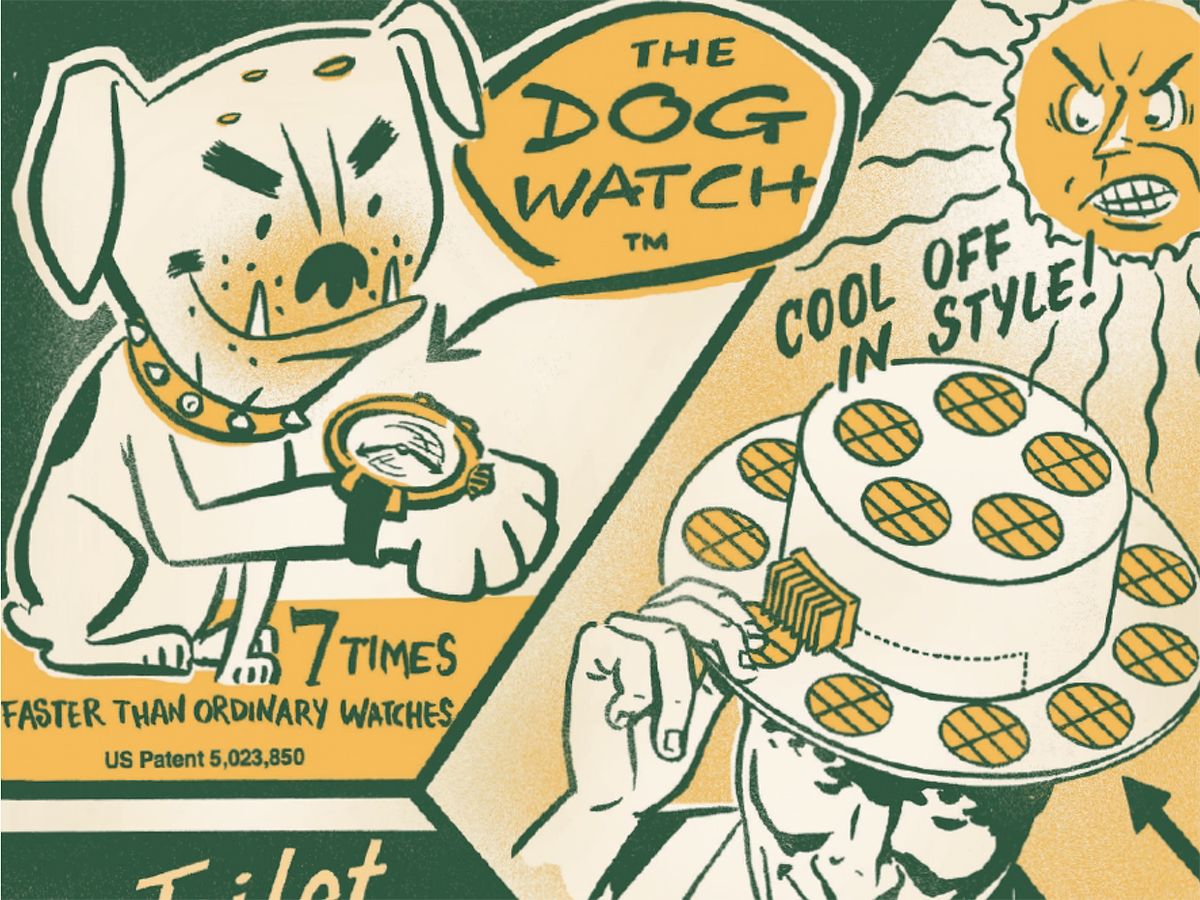
Albie’s Food Inc., a small grocery and catering company in Gaylord, Mich., received an unusual letter in 2001 from the law firm representing jelly giant J.M. Smucker Co. The letter accused Albie’s—which sells pastries and sandwiches in northern Michigan—of violating Smucker’s intellectual property by selling crustless peanut butter and jelly sandwiches.
In particular, Smucker’s claimed that Albie’s had infringed Smucker’s recently granted U.S. Patent No. 6004596, which gives the Orrville, Ohio, company broad protection on its “sealed crustless sandwich.” In a move that undoubtedly surprised the jam magnates, Albie’s decided to defend itself in federal court. Albie’s law firm noted in its filings that the “pasty”—a meat pie with crimped edges—has been popular fare in northern Michigan since the immigration of copper and iron miners from Cornwall, England, in the 19th century.
A battle in federal court over peanut butter and jelly sandwiches may seem merely funny and a little pathetic. But it is symptomatic of the larger and more profound problems with the U.S. patent system. We have reached the point where serious lawyers are being paid serious fees by a big company to shut down the PB and J operation of a grocery store.
The U.S. Congress set us on this road in 1982, when it created a centralized appellate court for patent cases called the U.S. Court of Appeals for the Federal Circuit. A decade later, Congress ordered that the U.S. Patent and Trademark Office (PTO), which up until then had been funded by tax revenues, instead fund itself through application and maintenance fees. Both changes were described as administrative and procedural rather than substantive.
But now, after still another decade, it is apparent that together these changes have resulted in the most profound transformation in U.S. patent policy and practice since the Patent Act of 1836. They make it easier to obtain patents, to enforce patents against others, and to extract large financial awards from such enforcement but harder for those accused of infringing patents to challenge the patents’ validity.
What’s more, the changes increase the risks associated with innovation—and not just for U.S. companies and inventors. Of the 169 028 U.S. patents issued in 2003, nearly half were issued to foreign entities.
Flawed as it is at times, the free enterprise system has demonstrated a unique ability to generate new technology. Industrialized capitalist economies have increased their productivity more in the last two centuries than in all the millennia of previous human history. The basis for this advance is the pursuit of profits, which forces companies to innovate. This incentive depends fundamentally on the smooth functioning of the institutions that determine and administer ownership of the fruits of research and development—the patents, trade secrets, and copyrighted material.
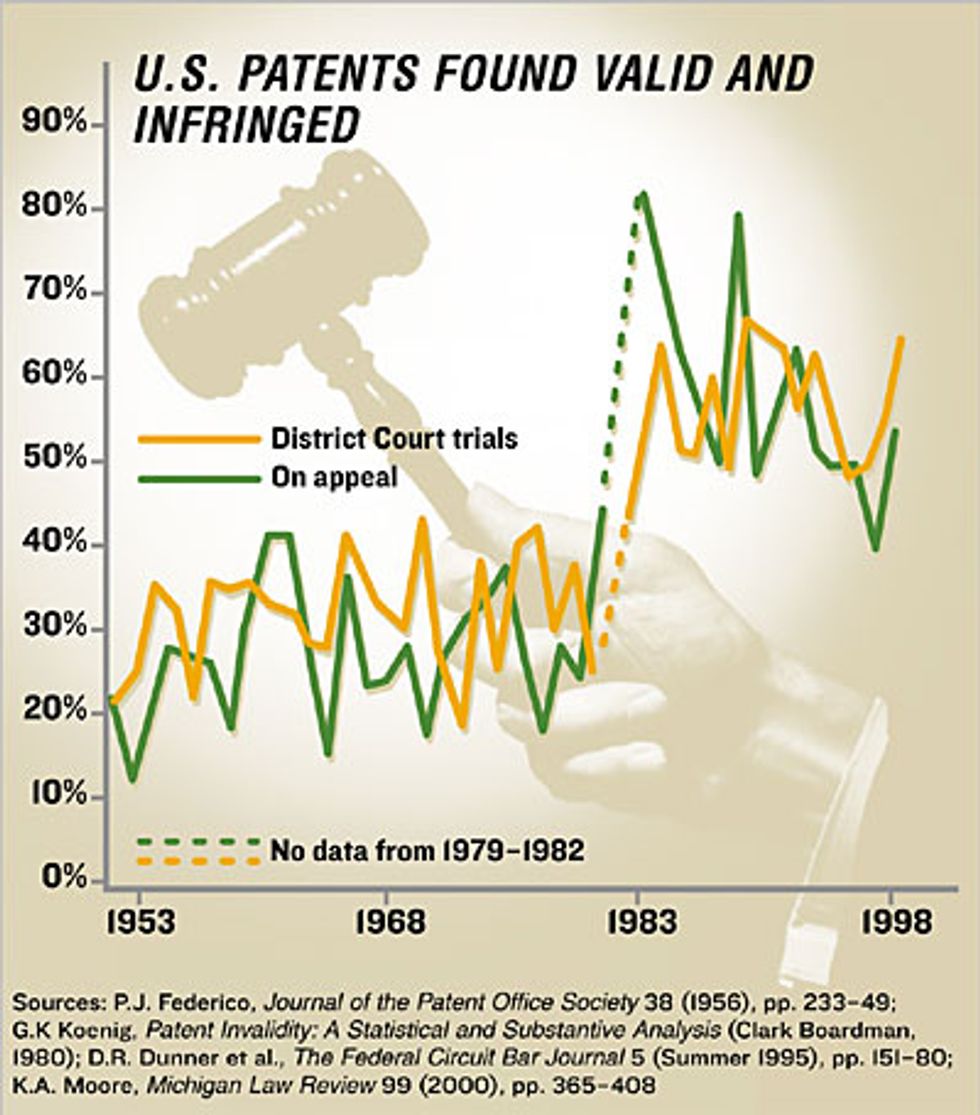
Instead, our PB and J-friendly patent system costs companies and individuals billions of dollars and millions of man-hours annually to obtain patents and fight frivolous lawsuits. More often than not, patent holders win in court, despite problematic claims stated in their patents. In recent years, as many as two-thirds of patent holders have succeeded in litigation at the federal district court level, compared with an average success rate of 32 percent in the decades before the congressional reforms took hold [see graph, "U.S. Patents Found Valid and Infringed"].
In other cases—as in the Smucker’s suit—the two parties ultimately settle the dispute. Many times, a small company like Albie’s concludes it is just too difficult and risky to dispute a patent and agrees either to pay for a license or to stop producing the offending technology. The cost of litigation is also a factor. A recent survey suggests that the median cost of litigating a major patent case today is about US $4 million.
These facts have led observers such as the U.S. Federal Trade Commission and the National Academy of Sciences (NAS)—both of which have released major studies of the patent system in the past year—to conclude that the U.S. patent system has significant problems.
As the NAS bluntly stated in its report: “[I]t is clear that both economic and legal changes are putting new strains on the system. Patents are being more actively sought and vigorously enforced. The sheer volume of applications to the U.S. Patent and Trademark Office—more than 300 000 a year—threatens to overwhelm the patent examination corps, degrading the quality of their work or creating a huge backlog of pending cases, or both. The costs of acquiring patents, promoting or securing licenses to patented technology, and defending against infringement allegations in court are rising rapidly.”
To stop this waste and to inject some sanity back into the process, we must create a more rational patent system. Our patent policy reform agenda rests on three related proposals.
First, create incentives and opportunities for parties to challenge the novelty and nonobviousness of an invention before the PTO grants a patent.
Second, provide multiple levels of application review, with examiners devoting successively more time and effort as an application proceeds to higher levels. The goal would be to avoid wasting money to meticulously examine unimportant patents, while taking sufficient care to avoid mistakes where the stakes are high.
Finally, in cases involving claims of patent invalidity based on the existence of prior art—that is, previously issued patents or public disclosures covering the invention at issue—replace juries with judges who could call on experts, called special masters, for guidance. The change would give parties threatened by invalid patents a better opportunity to make their cases to the court.
The first two proposals aim to make the PTO more effective at a reasonable cost. The third addresses the reality that since even the best of all possible PTOs will make mistakes, we need a court system capable of correcting them.
The U.S. patent nightmare began with an apparently benign change in the nation’s judicial process. Almost all formal disputes involving patents are tried in the federal judicial system, with the initial litigation undertaken in a federal district court. Before 1982, appeals of patent cases were heard in the appellate courts of the various circuits. These courts differed considerably in their interpretation of patent law; some courts were more than twice as likely to uphold patent claims as others. The differences persisted because the U.S. Supreme Court, which normally steps in to ensure national legal uniformity, rarely heard “banal” patent cases.
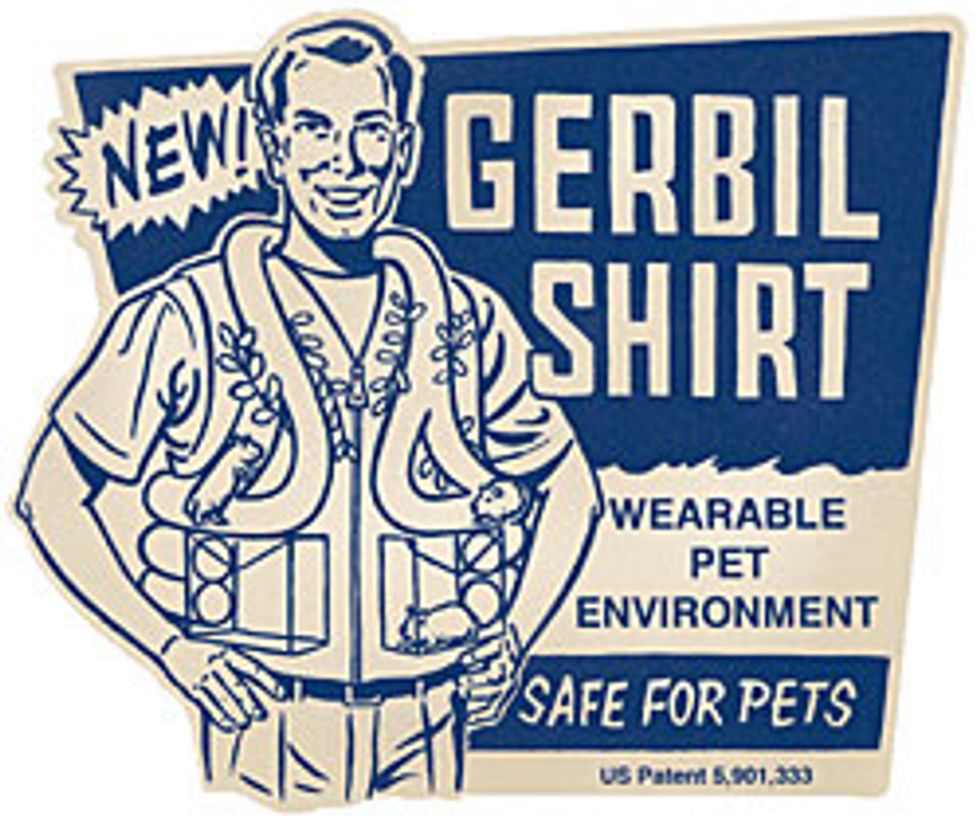
This judicial variety encouraged litigants to shop for the best legal forum for their patent cases. Patent applicants would crowd the hallway in the patent office in Arlington, Va., where the list of patent awards was distributed at noon each Tuesday. On discovering that their patent was issued, new patent holders would rush to the pay phones to instruct their lawyers to file suit against some alleged infringer in a patent-friendly district court.
Meanwhile, representatives of firms that might be accused of infringing the new patent would race to the phone bank as well, ordering their lawyers to sue the new patent holder for infringing an old patent of theirs or, occasionally, to seek to have the new patent declared invalid in a district known to be skeptical of patents. Such dueling lawsuits would usually be combined into a single action, heard in the district court in which the earliest filing was made. Often the fate of the case—and many millions of dollars in damages—would depend on which lawyer got an earlier date-time stamp on the filing documents.
In 1982, the U.S. Congress decided to address this situation by establishing a central appellate court for patent cases, the U.S. Court of Appeals for the Federal Circuit (CAFC). The change was presented in congressional hearings as bringing consistency to the chaotic world of patent litigation.
But over the next decade, the new court significantly broadened and strengthened the rights of patent holders. The share of cases in which the CAFC upheld a district court finding of patent infringement increased from 62 percent to 90 percent, and the share of cases in which it reversed an earlier finding that a patent holder was not entitled to damages rose from 12 percent to 28 percent [again, see graph, “U.S. Patents Found Valid and Infringed”]. The CAFC also made it easier to shut down a rival’s business even before a trial and to extract significantly greater damages from infringers.
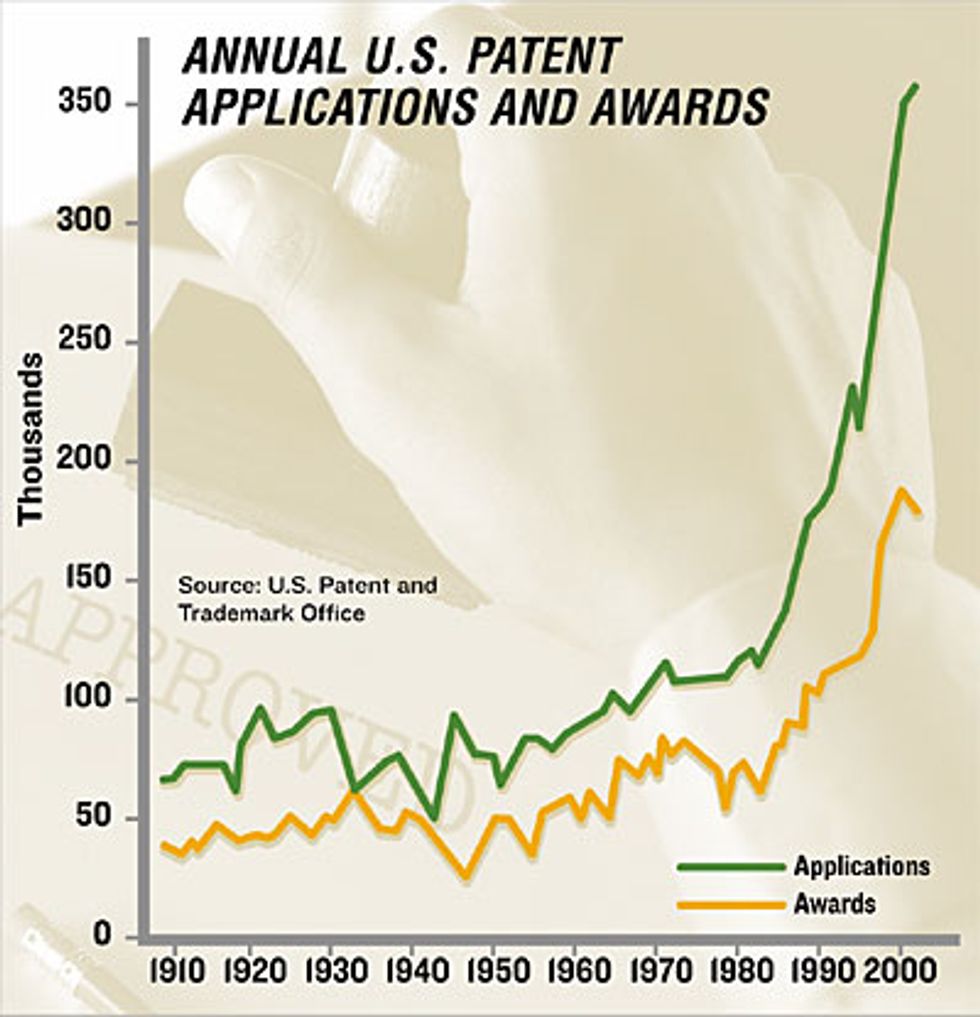
Decisions of the CAFC encouraged more patent applications by expanding the realm of patentable subject matter to include software, business methods, and certain kinds of biotechnology. These decisions also contributed to lowering the standards of proving an invention’s novelty and nonobviousness, which made it easier to qualify for a patent and to enforce patents, making the patents more valuable. As a result, the rate of patent application and litigation in the United States began to soar [see graph, "Annual U.S. Patent Applications and Awards"].
As the tide of patent applications rose in the early 1990s, Congress intervened once again, but for another reason. This time it converted the PTO from an agency funded by tax revenues, which collected nominal fees for patent applications and maintenance, into one funded solely by those fees. That would have been a good move if the PTO used all of its revenues to hire more examiners, experts, and administrators. Instead, the patent office has become a profit center for the government, collecting more in application fees than it costs to run the agency at current inadequate staffing levels. In some years, more than $200 million in “excess” PTO revenues have been collected, but these funds have usually flowed into federal general-revenue coffers.
These general-revenue diversions are starving the patent office of the capital it needs to hire more examiners at competitive salaries, and most likely these diversions will continue. In mid-September, the U.S. Senate Committee on Appropriations voted to raise patent fees but rejected a proposed House of Representatives initiative to place the additional revenues into a trust fund that would be accessible only to the PTO.
The result is that today the PTO views itself as an organization whose mission is to serve patent applicants quickly at the lowest possible cost. Not surprisingly, given the number of patent applications, there has been a widely perceived decline in the rigor with which patent applications are reviewed. Calculations by intellectual property attorney Cecil D. Quillen Jr. suggest that, after adjusting for the refiling of rejected applications, the acceptance rate of patent applications is more than 85 percent. This perceived lack of rigor, in turn, encourages more people to apply for patents covering inventions of dubious value.
Patent experts agree on three broad goals for reform: improving the quality of patents, reducing uncertainty surrounding the process of innovation, and limiting patent application, maintenance, and litigation costs.
Improving quality: People today are getting patents for inventions that are not new, are obvious, are laughably insipid, or sometimes are all of the above. Some examples are:
- A watch for “keeping animal time”—for dogs, it would run seven times as fast as an ordinary watch (U.S. Patent No. 5023850).
- An accessory kit for a snowman, including lumps of coal, a carrot, and a corncob pipe (U.S. Patent No. 5380237).
- A patent covering a “method of swinging on a swing,” which was “invented” by a five-year-old (U.S. Patent No. 6368227).
An obvious solution would be to make it much harder to get a patent on anything. But the objective of ensuring the highest possible patent quality has to encompass more than just making sure invalid patents aren’t issued. Any reform has to ensure that inventors will still get patents when they have a truly novel invention, that such patents will be processed relatively quickly and reliably, and that, once granted, they will provide ironclad protection for subsequent investment in the invention.
Reducing uncertainty: Companies and individuals will hesitate to innovate if they fear that their research and product development may come to nothing because someone might assert an as yet unknown or untested patent against them. Further, when one party accuses another of patent infringement, uncertainty often prompts the accused to simply abandon its claim to an allegedly infringing technology, or even to agree to pay possibly unnecessary royalties or license fees.
Limiting costs: The PTO currently spends slightly more than $1 billion per year for its operations. Given today’s budgetary realities, it is unlikely that resources for the PTO will increase dramatically. Patent applicants spend several times that amount, and patent litigants spend billions more. Reforms should help limit such significant expenditures.
The next step toward reform is to understand some basic realities about the system. Patent examinations—and examiners—will never be perfect. Therefore, while we cannot hope to have a system in which no “bad” patents are ever issued, we can strive for a system that produces fewer bad patents. And, since there will always be mistakes, it is crucial that the system function reasonably well despite the issuance of some bad patents.
Most patents are, and always will be, worthless and unimportant. This is not a feature of the patent office; it is a feature of the innovation process. The significance of a new idea usually cannot be known when it is first developed, because that significance depends on subsequent developments, both technological and economic. The upshot is that many good ideas are patented that never actually turn out to be worth anything.
Most days, patent examiners are like officials working the last minute of a basketball game in which one team is winning by 30 points. They go through the motions to make rulings because rulings have to be made, but those rulings will have little impact on the outcome of the game.
The key difference between that basketball game and the patent game is that much of the time no one involved with patent decisions knows whether the development covered by the patent is going to matter or not. It is as if nobody—the officials, the players, or the coaches—has any idea of the score of the game, or if the game even matters. But they all take it seriously because there is some chance that the specific patent being considered will turn out (months or years later) to be important.
For those that do turn out to be important, it will matter a lot if the patents are granted. But for the others, the vast majority of all applications, there would never be important technological or economic consequences if bad patents were issued. This fact suggests that it is inefficient to spend a lot of time and money on the careful examination of all patent applications.
To make patent examination more efficient, we must go beyond thinking about what patent examiners do to consider how the nature of the examination process affects the behavior of inventors and companies. The rate of applications has skyrocketed over the last two decades, because patents are so easy to get that people try to patent inventions that no one would have bothered to patent before. This perception promotes a vicious circle in which bad examination increases the application rate and, in turn, the buildup in applications overwhelms the examiners, further reducing examination quality.
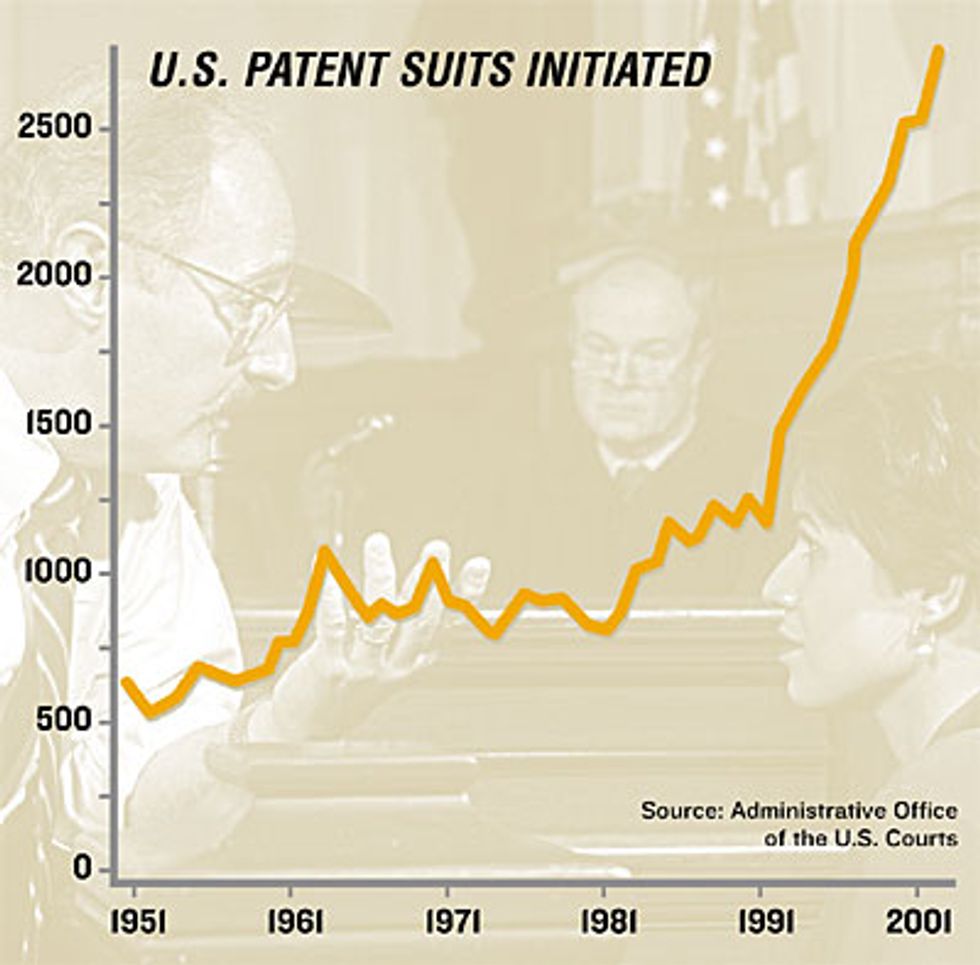
Similarly, the CAFC’s rulings that have increased the chances of patent holders’ prevailing in infringement suits have encouraged patent holders to sue. The number of patent infringement suits filed in 1981, the year before the CAFC was created, was 795. In 2003, three and a half times as many cases were filed—2814 [see graph, "U.S. Patent Suits Initiated"]. At the same time, many alleged infringers, knowing that the CAFC tends to side with patent holders, don’t bother to fight, even when they believe that the patents being used to threaten them are not valid.
Much of the information needed to decide if a given application should be granted a patent is in the hands of an applicant’s potential competitors, sometimes in the form of trade secrets, rather than in the hands of the PTO. This is especially true of information about what related technologies already exist that would invalidate an application’s claims of novelty and nonobviousness. There are strong incentives for firms to share this information. If a competitor of yours has filed a patent application, the last thing you would want is for that company to be issued a patent on an application that would have been rejected if the PTO had known about your technology.
So you would, of course, provide this information, if only the PTO would give you an opportunity to do so, and if taking advantage of such an opportunity would not lead to strategic disadvantages for you down the road. Creating opportunities of this sort is another way that the system could exploit the incentives for private parties to help the patent office increase its efficiency.
But before swooning over the beauty of incentives, we must recognize the potential for them to be misused. A company could, with relative ease, throw some kind of speed bump into a competitor’s path and would probably be happy to do so even in the case of a “good” application.
Our proposed revamping of PTO procedures starts with the idea that a process with multiple levels of review would most efficiently balance the need to bring in outside information with the reality that most patents are unimportant. Examination would begin as it does now, with the review of an application by an examiner and no participation by other parties.
If, however, the examiner determines that a patent should be issued, there would then be an opportunity for what we call pre-grant opposition. A public notice of the intention to issue a patent would be followed by a brief period in which other parties could submit evidence that the patent is not really new. This pre-grant opposition would not give outside parties any opportunity to argue their cases, and they would not have access to legal discovery processes to produce additional evidence of prior art. It would simply be an opportunity for parties to put information before the examiner.
If, after reviewing this evidence, the examiner decides to issue the patent, there would be a final opportunity for possible competitors to argue the patent award. This opportunity would come in the form of a request for re-examination, which would allow the competitors to make a case that the patent is invalid. The PTO could decline to grant the re-examination request. But if it agrees, an independent examiner would completely review the initial decision and offer the party requesting re-examination a chance to argue its case.
The procedure would naturally focus attention on the most potentially important applications. Most patents would never receive anything other than the most basic examinations. But for those applications that really mattered, parties would have an incentive and opportunities to bring information in their possession before the PTO, providing it with more resources to help it make the right decision in the crucial cases.
Breaking the vicious circle of bad examination and frivolous patent applications is the key to reform of the patent process. But, as we have emphasized, there are always going to be mistakes. So it’s important that the court system operate as efficiently as possible to rectify those mistakes, while also permitting owners of valid patents to enforce the legal rights the patents convey. The CAFC has significantly tilted the legal playing field in favor of patentees.
A major complaint of attorneys who defend infringement suits relates to the right to a jury trial. They argue that the evidence in a patent case can be highly technical and that the average juror has little competence to understand and evaluate it. Having decisions made by such a body increases the uncertainty surrounding the outcome, which is a big reason that accused infringers often settle rather than fight, even when they think they have a pretty good case.
More subtly, jurors’ inability to grasp technical evidence may interact with the presumption of validity—the rule that patents must be presumed legitimate unless proven otherwise—in a way that helps patentees and hurts accused infringers. To prevail in an infringement case, an accused infringer has to present clear and convincing evidence that the patent is invalid. But if the jurors are simply befuddled by the evidence, they will most likely conclude that neither side has made a convincing case.
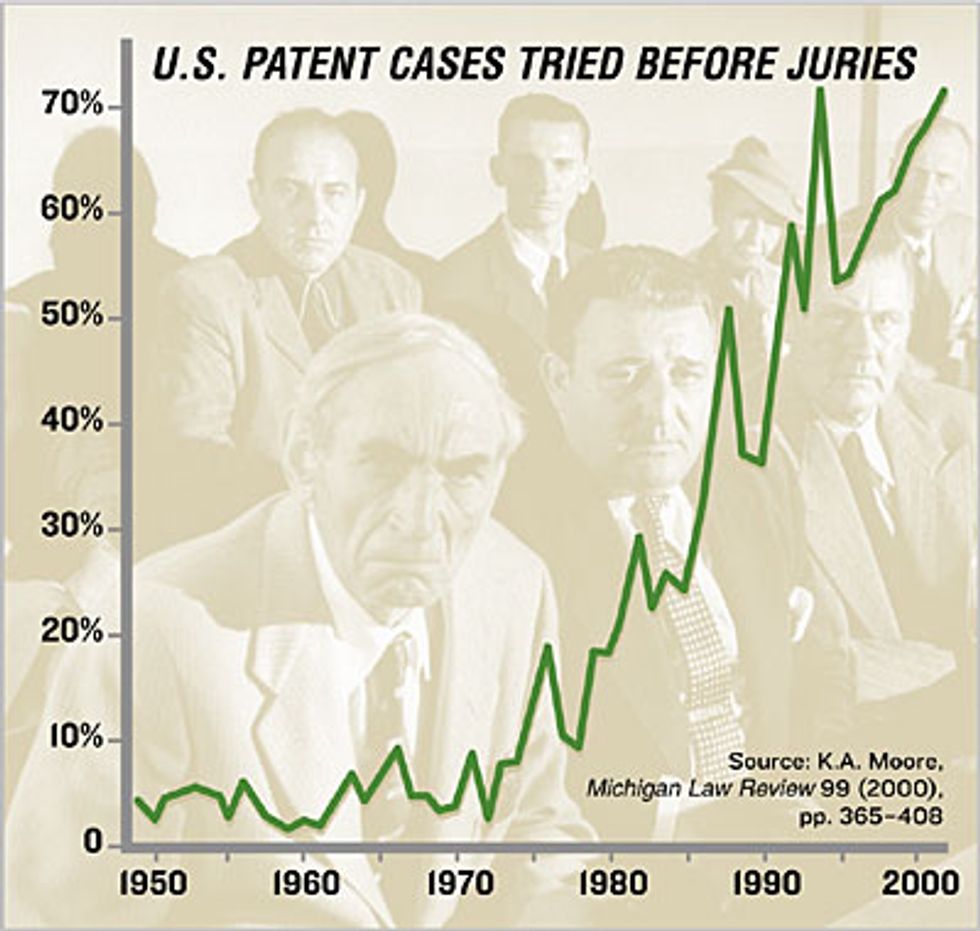
In effect the “clear and convincing evidence” standard combined with decision making by juries makes it likely that the patent holder will win on validity questions—which is why most holders ask for a jury trial! Indeed, a study by Kimberly A. Moore, a professor at George Mason University School of Law in Arlington, Va., finds that juries are twice as likely to uphold patent holders as are judges. [See graph, "U.S. Patent Cases Tried Before Juries."]
The right to a jury of one’s peers is a venerated concept in Anglo-American law. But there is no real sense in which a patent jury is, in fact, a jury of peers. If we left patent cases to judges rather than to juries, we would still not have scientists and engineers, the true peers of the inventor, deciding the case.
The final part of our reform proposal is to let judges and not juries decide the merits of a patent-infringement suit. At least judges spend their professional lives evaluating evidence in many different disciplines and have typically developed some ability to sort through it. Further, a judge may always appoint a special master, an outside expert in the service of the court, who can rule on the judge’s specific technical questions.
The CAFC has, in fact, put some limits on the role of juries in patent cases. In particular, it is the job of the judge, not the jury, to interpret—or construe—the patent’s claims: the judge assists the jury by interpreting the technical language of the patent. But when it comes to understanding when the subject of a patent application lacks novelty or nonobviousness—which the accused infringer must convincingly prove in order to invalidate the plaintiff’s patent—the jury gets no such help.
There is no good reason that a lay jury is the appropriate decision-making body for these questions. It would be entirely feasible for the judge to construe the novelty and nonobviousness of the patented invention relative to some other invention, just as the judge construes the claims of the patents. The ultimate question of patent validity could still be left up to the jury.
If, for example, the judge ruled that the plaintiff’s patent at issue is not original relative to the defendant’s invention, there might still be a dispute as to whether the defendant’s invention was, in fact, already discovered at the time of the patent filing. The jury could then decide that question, based on testimony and documentary evidence about the date of the invention in question.
If the PTO’s examination and the trial processes were revamped as we suggest, then patent litigation would be the last resort when disputes over patent claims cannot be resolved. There would still be patent suits, of course, and they would still be expensive. And in areas where technology is changing rapidly and there are numerous competing and overlapping claims, there would still be considerable uncertainty about who has the rights to what technology.
But the revamping would reduce the pervasive and damaging fear that almost any product or process is always at risk of an infringement claim. When suits are filed based on patents of questionable validity, accused infringers would negotiate from a position where both parties could expect a reasonably competent determination as to novelty and nonobviousness. That fact alone would reduce the incentive for a defendant to pay royalties and settle rather than undertake a risky legal battle, no matter how questionable the validity of the patent at issue.
We need to make sure that before they can be used to restrict the commercial activities of competitors, patents have received the appropriate scrutiny to ensure their validity. Our reform provides this, because it allows informed parties to be involved before a patent is issued. At the same time, we need to accept that the PTO will still make mistakes, so our proposal creates a judicial system that deals with those mistakes in a balanced way.
About the Authors
Adam B. Jaffe is the Fred C. Hecht Professor in Economics and Dean of Arts and Sciences at Brandeis University, in Waltham, Mass. Josh Lerner is the Jacob H. Schiff Professor of Investment Banking at Harvard Business School in Cambridge, Mass. They cowrote Innovation and Its Discontents: How Our Broken Patent System Is Endangering Innovation and Progress, and What to Do About It, which was published in November by Princeton University Press.